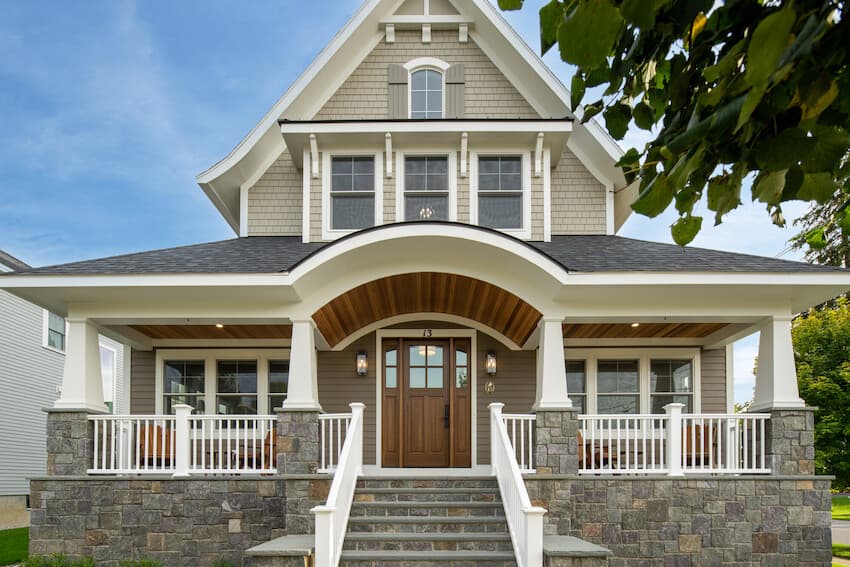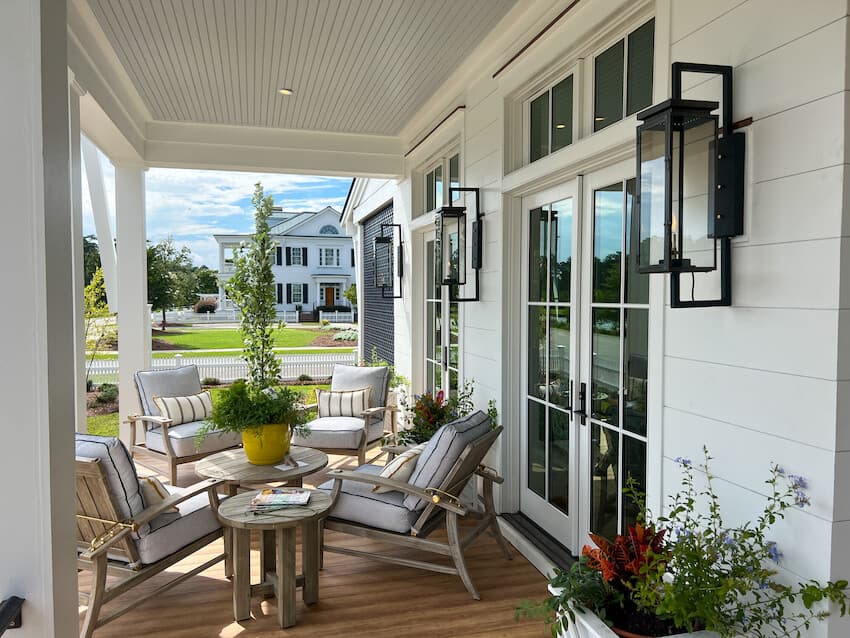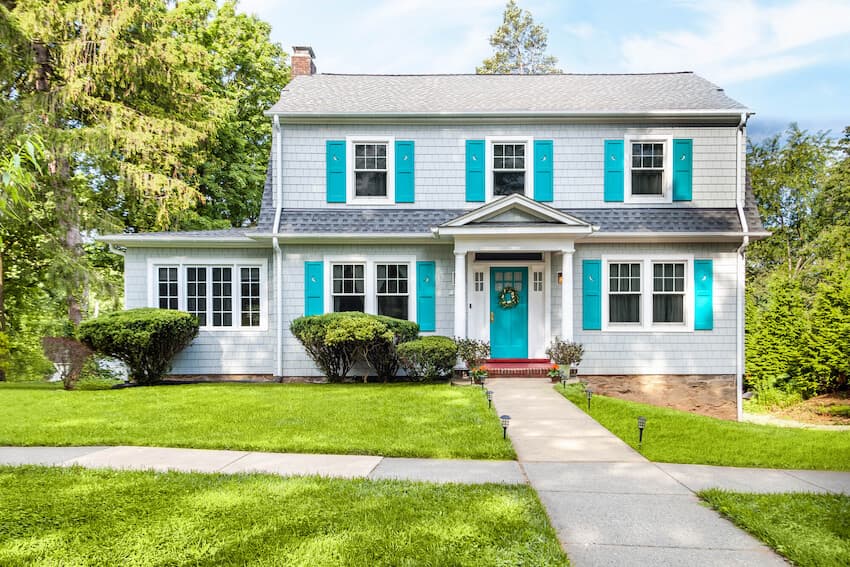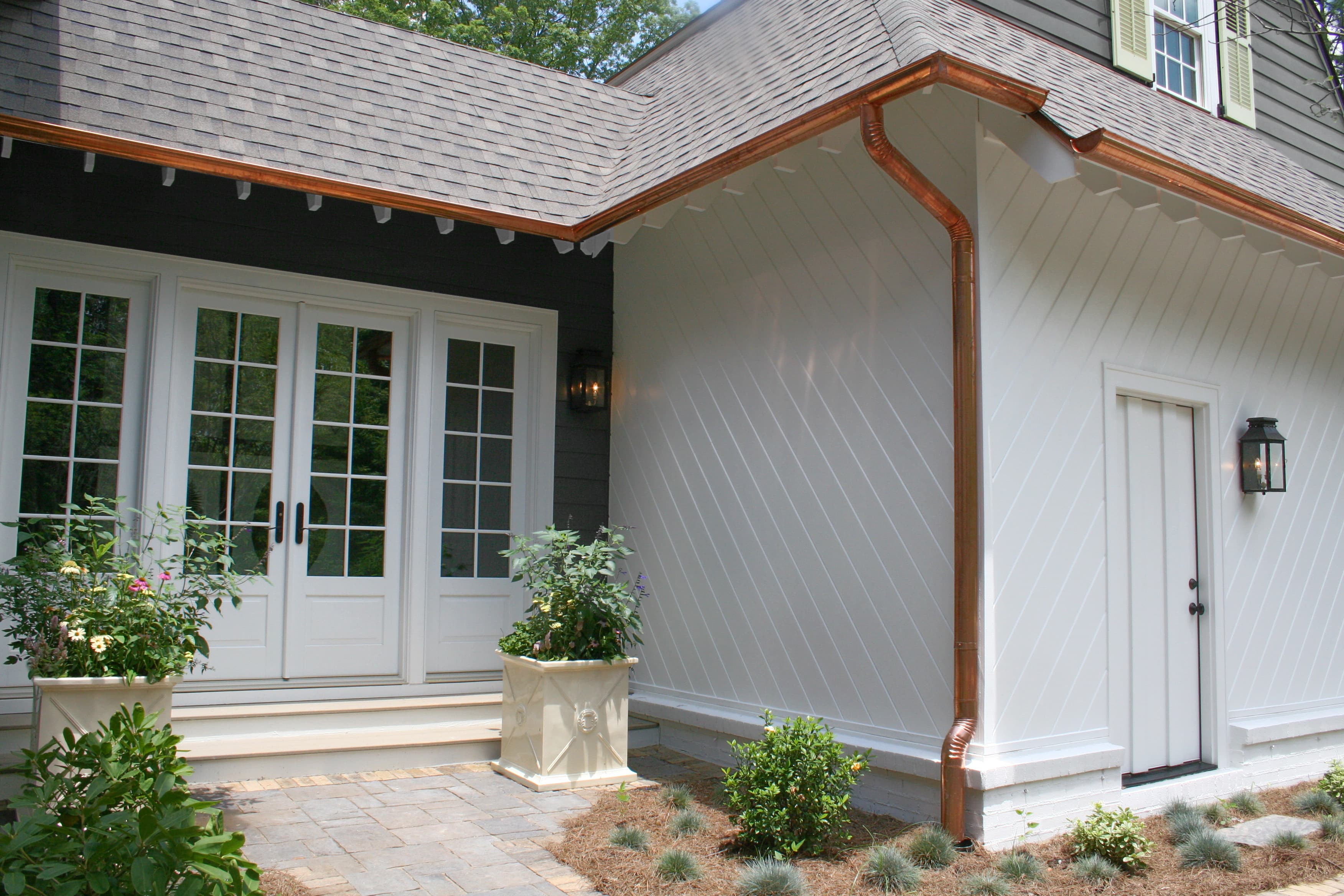Simple ideas for enhancing your home's exterior design
Beautify your home’s exterior design for peak curb appeal with tips from James Hardie, the world’s premier manufacturer of high-performance fiber cement siding.

Are you happy with the outward appearance of your home? Does it fill you with a sense of pride and reflect your tastes and sense of style? Are the colors, finishes, and accessories practical and beautiful? If you can’t answer all these questions with a resounding "Yes," then this article is for you. Keep reading for our expert suggestions and tips on how to enhance your home’s exterior design — both for optimal curb appeal and to delight your inner designer. With these tips, your home will stand out and get noticed.
BLEND IN OR STAND OUT?
The color, finish, and style of your exterior accessories can either blend in with the rest of your home or showcase an unexpected spark of color, such as a brightly colored front door.

However, you’ll likely want to coordinate or match the various elements — for example, using the same metal finish for outdoor light fixtures, your mailbox, and your house numbers. Consider the entire home when planning to enhance the exterior design. This includes your house’s architectural style, siding, shutters, and trim.
USE PROPORTIONS TO COMPLEMENT YOUR HOME
One rule to remember for the best appearance, especially with front door lighting, is to choose a fixture that’s appropriate for your home’s entrance. According to the home decorating blog Pender & Peony, an important consideration for an exterior light, besides complementing your home’s architectural style, is that it’s the right size. A large pendant light is ideal for a large, dramatic entrance, but it will overpower a small cottage entryway.
Consider these light-fixture sizing rules:
- Ceiling light: one-fifth of the height of the door (plus fan light and casing)
- Wall-mounted light at the front door: one-fourth of the height of the door (plus the door casing and any fan light above it)
- Post-mounted light: one-fourth of the height of the pole

Ideally, all your exterior lights should match each other in terms of style and finish, for a more coordinated look.
CONSIDER THE ARCHITECTURAL STYLE OF YOUR HOME
When redesigning your home’s exterior with lighting, repainted shutters or trim, a new mailbox, house numbers, planters, or even outdoor furnishings, it is a good idea to stay historically accurate to its original architectural style.
Think about the style of your home and its characteristics. Choose elements that align with that style for a more harmonious look. These popular architectural styles have certain features that define them, and you can bring out the natural beauty of your home by complementing its innate personality.

Cape Cod
Cape Cod-style homes have a low, rectangular profile and steeply pitched gabled roof, dormer windows, and a central chimney. The Cape Cod house looks best with dark metal vintage-style wall sconces at the entrance. You can choose a metal mailbox in the same finish or go with a traditional post-style mailbox.
Craftsman
The Craftsman style features wood framing, open floor plans with exposed rafters, and column-supported front porches. To complement its clean, simple style, a Craftsman home looks best with simple and angular or Mission-style accessories. The Mission style is very similar to Craftsman, with an even more straightforward design.
Colonial
If you live in a Colonial-style home, its formal and stately appearance is perfectly complemented by equally elegant fixtures, typically in a dark metal finish. Post lights, with the post base matching the home color, and wall sconces on either side of the front door work well for this home style. A matching ceiling light is often used for a dramatic effect at a covered front entrance.
Contemporary or Modern
The contemporary or modern home refers to two different styles. Modern refers to the mid-century modern architectural style that used steel, glass, wood, and reinforced concrete for a utilitarian, minimalist design. The contemporary style is constantly evolving. Modern accessories are more traditional and made from metals or wood, whereas contemporary exteriors may include artistic LED lighting and solar lights.
Ranch
For a simpler ranch house, ensure that whatever exterior design enhancements you make don’t overpower the simple lines and charm of your home. Use minimal furnishings and small, tidy potted plants on the front porch. Look at simple designs for front door lighting, the mailbox (post or wall mounted), and house numbers.
Victorian
Do you live in a Tudor Style home? These elegant houses lend themselves to more ornate and decorative exterior elements. Explore antique-style exterior elements, from decorative wall-mounted letter boxes and wrought-iron garden furniture to Victorian-style pedestal planter pots or trough planters for your grandly designed home.
Try to mirror specific details in your home’s architecture. For example, if there are curved arches, consider a curved light fixture and complementary mailbox. If your home style is ornate, such as a Queen Anne Victorian, elegantly styled house numbers will fit right in.

CONSIDER ALL OF YOUR HOME'S ELEMENTS
When considering the overall appearance of your home, every part of the house and grounds plays an important role. Of utmost importance is your home’s siding — its most visible element. If your siding is damaged or old and faded, consider replacing it with a more attractive, longer-lasting alternative. If you’re thinking about new siding, consider the best house and roof color combinations for maximum beauty, longevity, and curb appeal.
In addition to the siding, think about roof color, trim, shutters, gutters, and every other external element of your home before you make plans for your makeover.

Designing (or redesigning) your dream home may seem overwhelming, but you can take steps to make the process flow more smoothly. For example, make a list of what you don’t like, discuss ideas with your family and friends, and be creative!
A STUNNING EXTERIOR THAT’S BUILT TO LAST
When you invest in a renewed home exterior, you want it to stand up to unpredictable weather conditions and other potential disasters for many years to come. Your siding is key to this kind of longevity. High-performance exterior siding by James Hardie is as tough as it is beautiful. We invented modern fiber cement technology and offer many styles and colors for a world of possibilities. Hardie siding will stay striking for years with minimal maintenance, thanks to its durability and the added benefit of ColorPlus® Technology finishes.
James Hardie has been in business for over 130 years and has been making modern fiber cement siding for the past four decades. Fiber cement is durable and low maintenance, made from Portland cement, sand, water, and cellulose fibers. It’s up to five times thicker than vinyl and resistant to rot, pest damage, and fire. Compared to other premium wood siding, it’s also more affordable.
Wondering what your home would look like with new siding? Visualize it with the Hardie™ Designer, powered by Hover®!